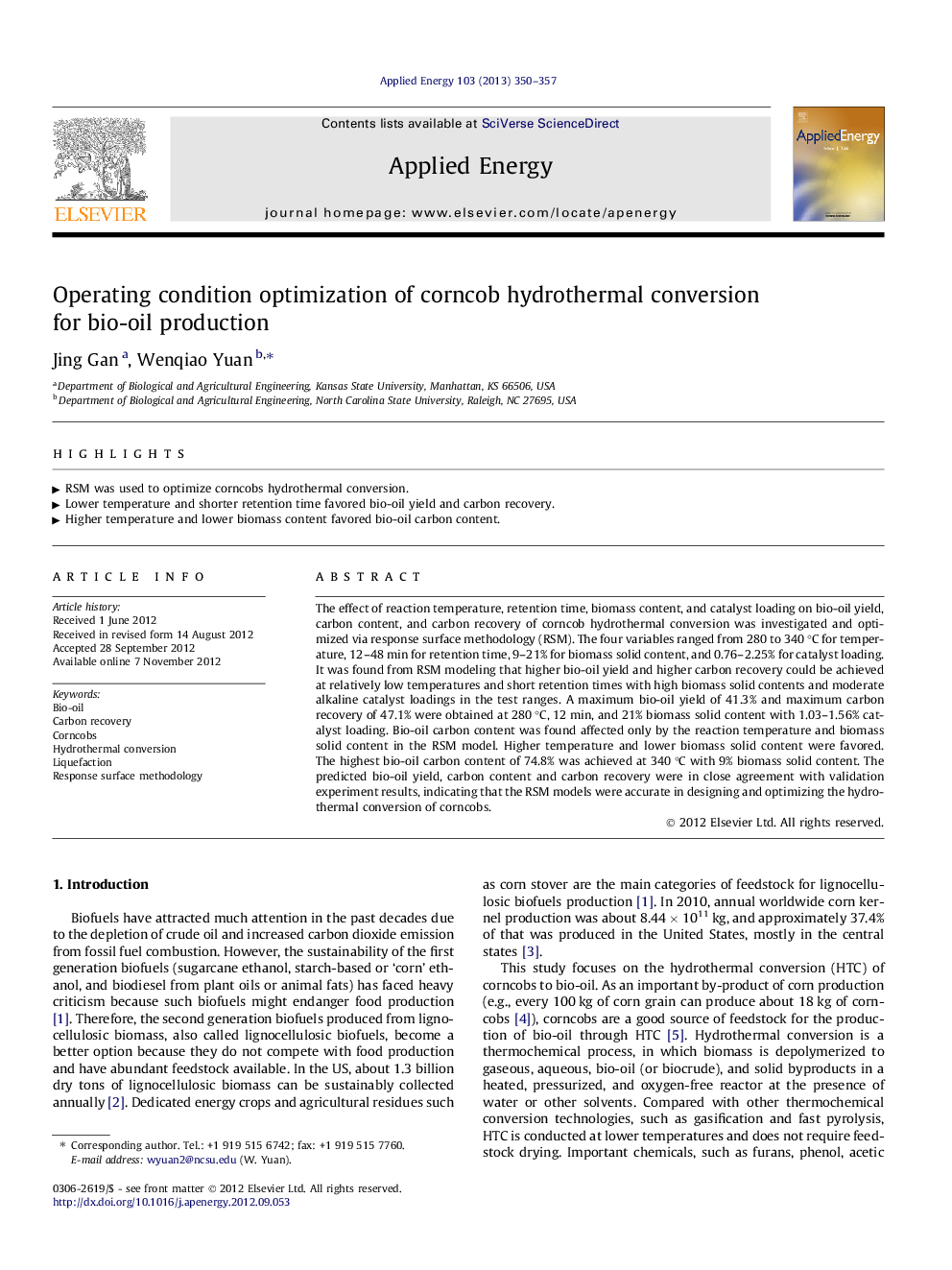| کد مقاله | کد نشریه | سال انتشار | مقاله انگلیسی | نسخه تمام متن |
|---|---|---|---|---|
| 243009 | 501915 | 2013 | 8 صفحه PDF | دانلود رایگان |

The effect of reaction temperature, retention time, biomass content, and catalyst loading on bio-oil yield, carbon content, and carbon recovery of corncob hydrothermal conversion was investigated and optimized via response surface methodology (RSM). The four variables ranged from 280 to 340 °C for temperature, 12–48 min for retention time, 9–21% for biomass solid content, and 0.76–2.25% for catalyst loading. It was found from RSM modeling that higher bio-oil yield and higher carbon recovery could be achieved at relatively low temperatures and short retention times with high biomass solid contents and moderate alkaline catalyst loadings in the test ranges. A maximum bio-oil yield of 41.3% and maximum carbon recovery of 47.1% were obtained at 280 °C, 12 min, and 21% biomass solid content with 1.03–1.56% catalyst loading. Bio-oil carbon content was found affected only by the reaction temperature and biomass solid content in the RSM model. Higher temperature and lower biomass solid content were favored. The highest bio-oil carbon content of 74.8% was achieved at 340 °C with 9% biomass solid content. The predicted bio-oil yield, carbon content and carbon recovery were in close agreement with validation experiment results, indicating that the RSM models were accurate in designing and optimizing the hydrothermal conversion of corncobs.
► RSM was used to optimize corncobs hydrothermal conversion.
► Lower temperature and shorter retention time favored bio-oil yield and carbon recovery.
► Higher temperature and lower biomass content favored bio-oil carbon content.
Journal: Applied Energy - Volume 103, March 2013, Pages 350–357